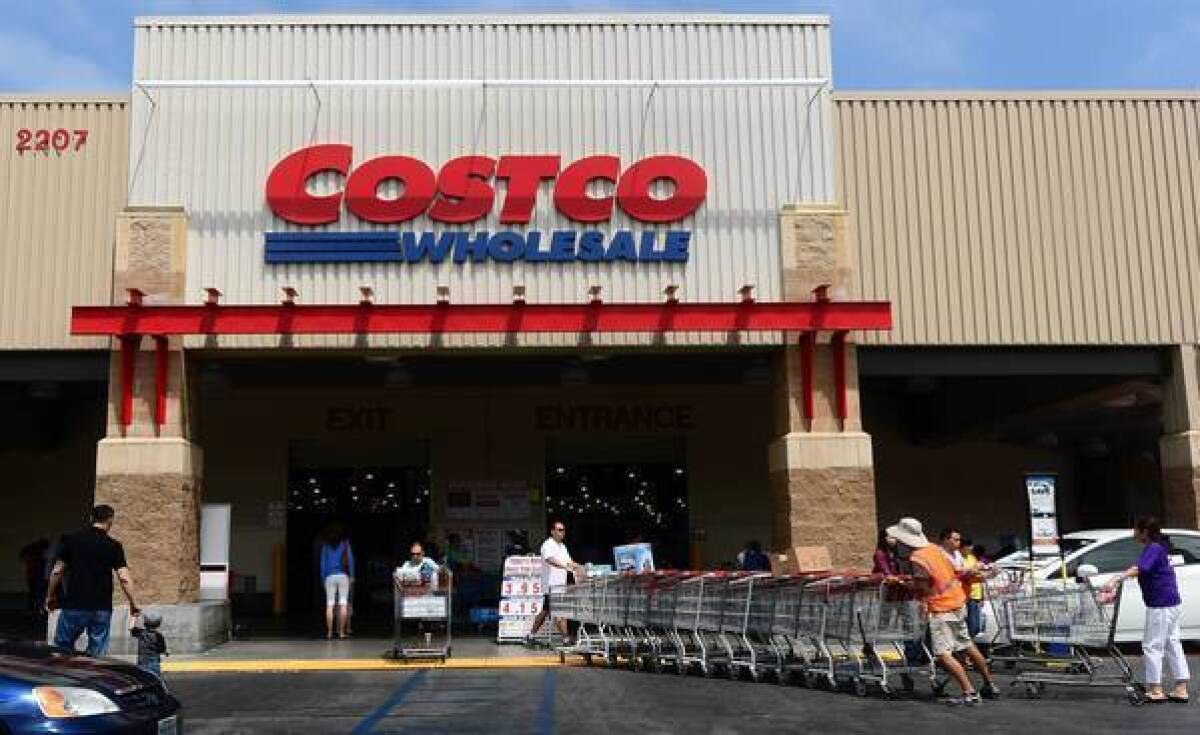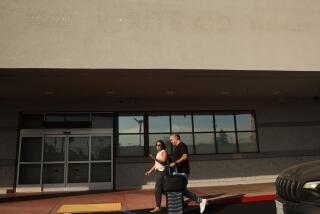Disparity in generic drug prices is a bitter pill to swallow

Generic prescription drugs have to meet exacting standards for ingredients and quality, which you’d think would make them uniformly priced at pharmacies.
But that, of course, isn’t the case. Generic drug prices can be all over the map, depending on where and how you buy them.
Bruce Lowther, 45, takes five generic prescription meds daily for a heart condition. He had a heart attack a few years ago.
Lowther was paying nearly $370 every three months for supplies of his drugs at Target. That was after his insurance covered the rest.
“I wanted to find out if I could get a better deal elsewhere,” Lowther told me. “I thought it would be easy to find out.”
It wasn’t. And his experience speaks volumes about the lack of transparency in medical pricing, not to mention what appear to be huge profit margins at some leading pharmacy chains.
Lowther, an engineer and self-described “numbers guy” in Bristow, Va., started his investigation online. He found most of his drugs available at dirt-cheap prices.
For example, a 90-day supply of the generic equivalent of Plavix, an anti-clotting drug, could be found online for $21.52. It was available at Walgreens for $512.97.
But Lowther, wisely, was concerned about buying meds over the Internet from drugstores located who-knows-where. There have been numerous reports of overseas pharmacies selling tainted or even fraudulent prescription drugs.
So Lowther focused on local drugstores. He made a list of his drugs and their respective doses, and then visited 10 leading pharmacy chains. His request was simple: How much would he pay for the drug?
Turns out you can’t just find that out, at least if you want to factor in your insurance.
“Each pharmacy said I’d first have to bring in a prescription from my doctor and fill it before I could find out how much I’d pay with insurance,” Lowther said. “That means you have to commit to getting your drugs at that pharmacy before you know how much they cost.”
He could have filled a prescription at each drugstore and then declined the transaction, but that’s a lot of hassle. So Lowther asked each drugstore about its retail prices for the meds — that is, how much they’d cost without insurance. This, he figured, would provide a sense of which pharmacy offered better deals.
The results were astounding.
For example, a 90-day supply of the generic equivalent of the cholesterol drug Zocor cost $51.99 at Safeway, $62.97 at Walgreens, $75.99 at Target and $122.99 at CVS. At Costco, however, the price was just $9.99.
The generic equivalent of the hypertension drug Zestril cost $10 at Target, $28.99 at Safeway, $31.99 at Walgreens and $38.99 at CVS. But at Costco, the price again was $9.99.
In fact, Costco’s drug prices consistently came in well below those of other leading pharmacies. And you don’t even have to be a Costco member to use the company’s drugstore.
Consumer Reports recently conducted its own survey of generic-drug prices. It, too, found that Costco consistently beat the leading pharmacy chains for low prices.
So I got in touch with Vic Curtis, senior vice president of Costco’s pharmacy operations, and asked him how he did it.
“It’s no secret,” he replied. “We keep our costs down, operate efficiently and pass along our savings to customers.”
Imagine that.
Specifically, Curtis said, Costco doesn’t spend money on TV or print ads and thus doesn’t have to pass along those costs to customers. He also said many Costco pharmacies are open primarily when people shop — 10 a.m. to 7 p.m. — not around the clock. This lowers overhead.
Operational differences are important. Costco has traded the convenience of having a drugstore in every neighborhood for the savings available to a big-box retailer.
Even so, there’s still a huge gap between many of Costco’s drug prices and those of rival pharmacies. Is Curtis selling popular drugs at a loss to get people into the store?
“Never,” he said. “We always get a profit. We never lose money on the operation of a pharmacy or on any given prescription.”
Kind of makes you wonder whether other drugstores are simply ripping people off with absurd markups for generics.
I contacted Walgreens, Target and CVS to ask why their drug prices were typically a lot higher than Costco’s. None offered a direct answer to that question, but each defended its prices as being fair and reasonable.
“In addition to convenient locations and hours, it’s important to consider the level of service a drugstore and its pharmacists provide,” said Jim Cohn, a Walgreens spokesman.
“Our services include 24/7 online pharmacy access, drive-through service, automated refills, prescription labels available in 14 languages and more 24-hour locations than all drugstore chains combined,” he said.
Jamie Bastian, a Target spokeswoman, said that “many factors can impact pharmacy charges, including a guest’s insurance plan, price changes from manufacturers, whether a provider has named the pharmacy a preferred location and the guest’s deductible.”
Mike DeAngelis, a CVS spokesman, said that pricing surveys, whether conducted by an individual or Consumer Reports, “are not effective in accurately comparing prices between pharmacies, due to various value, discount and third-party insurance programs.”
What I’m hearing from these big chains is that drug prices are complicated, so don’t go thinking that it’s just about who can offer a generic drug for less.
What I’m hearing from Costco is that drug prices are relatively simple, and that it’s all about who can offer a generic drug for less.
It’s up to each of us to choose which viewpoint they agree with, and how important it is not to have to drive miles to fill a prescription. I have to admit convenience is a factor for me, although not worth a possible markup of $100.
Lowther had no trouble making up his mind. He transferred all his prescriptions to Costco.
David Lazarus’ column runs Tuesdays and Fridays. He also can be seen daily on KTLA-TV Channel 5 and followed on Twitter @Davidlaz. Send your tips or feedback to david.lazarus@latimes.com.
More to Read
Inside the business of entertainment
The Wide Shot brings you news, analysis and insights on everything from streaming wars to production — and what it all means for the future.
You may occasionally receive promotional content from the Los Angeles Times.











